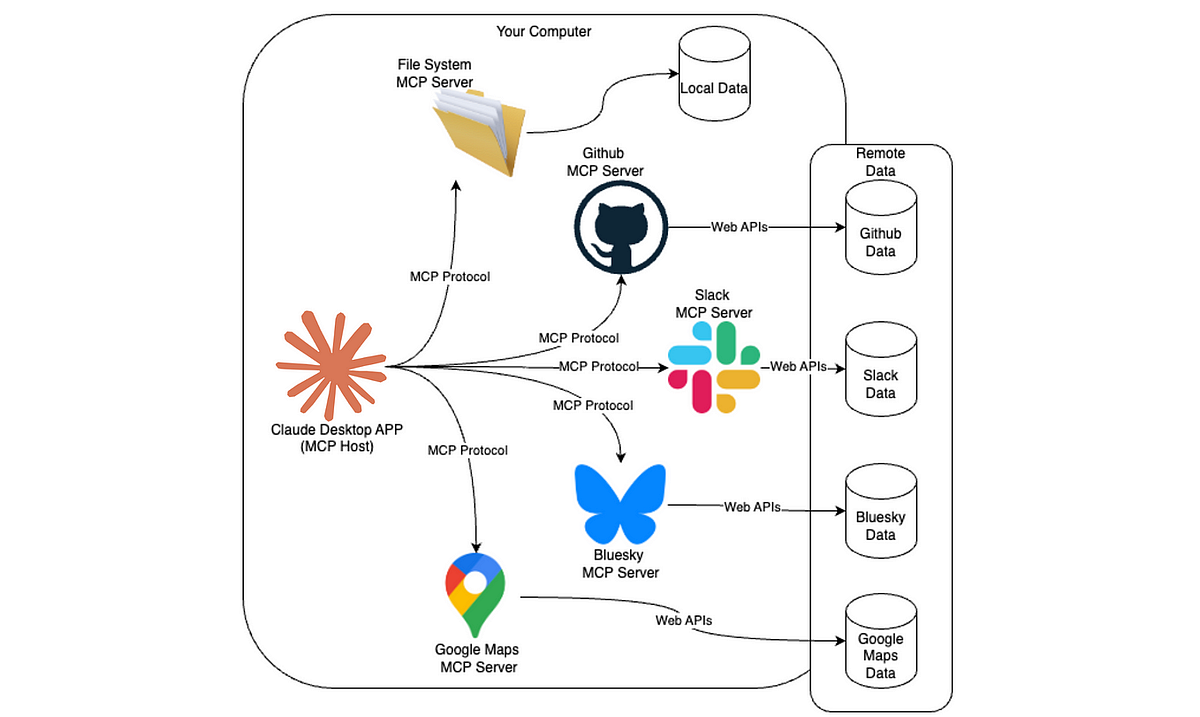Effective Client Communication Strategies for Your Agency and How to Elevate Them with AI
Share now

In the agency world, your biggest growth constraint isn’t talent or leads — it’s communication. Misunderstandings drain capacity, break trust, and slow delivery. That’s why mastering effective client communication strategies is no longer optional; it’s a system-level competency.
Good client communication for SEO agencies is all about being clear, consistent, and strategic. That means setting realistic goals, sharing reports that actually make sense, and tailoring updates to what each client cares about. You can make this way more efficient with AI, automated dashboards, AI-generated insights, or progress summaries that save time while keeping clients in the loop.
Pair that with regular check-ins and feedback, and you’ve got a system that builds trust, shows value, and keeps campaigns running smoothly without drowning your team in manual updates.
At 8 Figure Agency, we’ve worked with hundreds of 7- and 8-figure agencies to rebuild how they communicate, blending proven human frameworks with AI-powered workflows. Our experience shows that when communication systems are optimized, agencies see faster approvals, clearer deliverables, and stronger retention — the kind that compounds revenue without adding chaos. Learn more about our methods and subscribe to our newsletter.
In this guide, we will delve into the intricacies of effective client communication, exploring strategies, best practices, and real-world examples to help you cultivate stronger client relationships, enhance project outcomes, and ultimately thrive in your professional endeavors.
Effective Client Communication for Marketing Agencies
Trust is the glue that holds client relationships together. When clients trust their agencies, they are more likely to collaborate, share critical information, and be open to suggestions. That means showing up with transparency and reliability in every touchpoint. Agencies that keep clients informed through weekly updates, consistent reporting, and clear documentation eliminate 90% of potential conflict.
AI can enhance this by removing manual friction: automated email recaps, meeting transcripts, and dashboard alerts make clients feel informed without your team drowning in admin work.
When verbal and non-verbal cues align — calm tone, confident posture, open language — you build subconscious credibility that supports every business interaction.
Techniques for Building Trust through Communication
Here are a few interactions for building trust during client interaction.
- Active listening builds trust by fully engaging, showing attention, and valuing words. You’re able to respect clients, acknowledge emotions, and underscore commitment.
- Demonstrating empathy shows that you grasp others’ feelings. You build trust by acknowledging challenges, celebrating successes, and showing genuine concern, forging a profound connection.
- Transparency and openness about progress, setbacks, and challenges demonstrate integrity. Sharing both positive and negative information shows commitment to solutions, enhancing credibility and client reassurance.
- Consistency and regular updates and responses create reliability, while inconsistencies can breed doubt. Reliably fulfilling promises and maintaining communication patterns reinforces your trustworthiness.
The Role of Non-Verbal Agency-Client Communication in Building Trust
Non-verbal communication , including facial expressions, gestures, and body language, plays a significant role in building trust. Non-verbal cues can convey sincerity, confidence, and active engagement. Maintaining eye contact, offering a warm smile, and using open body language signal that you are attentive and approachable. Consistency between verbal and non-verbal communication enhances the authenticity of your interactions.
How to Set Expectations in Client Communication

Clear expectations form the foundation of a productive and positive client-provider relationship.
When expectations are vague or misaligned, it can lead to frustration, dissatisfaction, and even project failure. On the other hand, well-managed expectations enhance transparency, accountability, and client satisfaction. Clear expectations demonstrate professionalism and contribute to an environment of trust and mutual understanding.
Techniques for Setting Expectations Through Agency-Client Communication
Here are a few ways that you and your account managers and team can set expectations through client communication while fostering good relationships.
- Clarifying Goals and Objectives: Begin by aligning the goals and objectives of the project. Clearly articulate what the client wants to achieve and what outcomes they can expect. This establishes a shared vision and helps both parties work toward a common goal.
- Outlining Project Timelines: Clearly communicate the project timeline, including key milestones and deadlines. This prevents unrealistic expectations and allows clients to understand the pace of progress. Regularly update clients on the project’s status to ensure they are informed about any deviations from meeting the original timeline.
- Defining Roles and Responsibilities: Clearly define the roles and responsibilities of both the client and your agency. This includes a contract outlining who will be responsible for specific tasks, approvals, and decision-making. This clarity prevents confusion and avoids situations where responsibilities overlap or fall through the cracks.
- Establishing Communication Protocols: Lay out communication protocols from the outset. Discuss preferred communication channels, frequency of updates, and who the main points of contact will be. Consistent and transparent communication channels enhance client-provider interaction and foster a sense of collaboration.
Optimizing Your Client Communication Workflow with AI
AI doesn’t replace communication; it standardizes and enhances it. A well-designed AI communication workflow can remove 60–70% of administrative noise from client management. Here’s how to build one inside your agency:
- Automated Meeting Summaries: Use transcription and summarization models (e.g., Fathom, Fireflies) to create actionable recaps with next steps auto-sent to clients.
- Tone Calibration Models: Train AI to rewrite updates in your agency’s tone — professional, warm, and concise — before sending them.
- Predictive Check-Ins: Set up AI triggers that detect project stagnation (e.g., missed task dependencies) and auto-prompt account managers to update clients.
- Reporting Automation: Feed campaign data into AI dashboards that translate metrics into plain language narratives for clients.
By aligning communication systems with AI, your agency eliminates lag, misinterpretation, and duplication. You create transparency without overworking your team — and that’s what scales. Agencies that adopt AI-optimized communication workflows experience 30–40% reduction in client escalations, faster project approvals and improved perception of professionalism and control.
By merging structure, empathy, and automation, you don’t just talk better — you lead better. If you have any questions on how to optimize your client journey with AI, feel free to contact us!
Communication Channels for Effective Agency-Client Communication
Choosing the right agency-client communication channel is crucial for fostering effective client communication. Different situations and preferences call for different methods of interaction.
Pros and Cons of Different Communication Channels
Weigh the pros and cons of the following communication channels to find the one best for your marketing agency.
Face-To-Face Meetings
Face-to-face meetings allow for direct, personal interaction. They enable participants to read non-verbal cues and build a stronger rapport. Face-to-face meetings are also ideal for discussing complex topics, negotiating, and building deeper relationships. On the downside, they can be time-consuming, require physical presence, and may involve scheduling challenges.
Phone Calls
Phone calls offer real-time communication without the need for physical presence. They are suitable for quick updates, discussing immediate matters, and addressing concerns that require verbal clarification. The cons are the lack of visual cues, the potential for miscommunication, and time-zone differences.
We all know that email is a versatile channel for sharing detailed information, documentation, and written records. It allows for thoughtful communication and provides a paper trail for reference. There are however the potential for misinterpretation, delayed responses, and information overload.
Video Conferencing
Video conferencing combines the benefits of face-to-face meetings and remote communication. It’s suitable for discussions that require visual aids, sharing screens, and engaging with remote clients. Technical issues, scheduling conflicts, long periods, and the potential for distractions are a few of the cons.
How to Report Effectively to Clients
You should choose suitable agency-client communication channels based on the communication’s essence, urgency, and preferences. Complex discussions favor in-person or video, and quick updates suit texts or email.
Start by focusing on metrics that matter most to them, like organic traffic, keyword rankings, or conversions, and avoid overwhelming them with too much data.
Use visual elements like charts, dashboards, or summaries to make insights easy to understand at a glance. Pair reports with actionable recommendations so clients see the strategy behind the numbers. Regular, structured updates—whether weekly, bi-weekly, or monthly—build trust and keep everyone aligned on goals and next steps.
Reporting matters because it shows clients the value of your work and keeps them informed about progress. It builds trust by providing transparency and accountability, helping clients understand what’s working, what isn’t, and why.
Overcoming Communication Barriers
Effective agency-client communication is not without its challenges, especially in client interactions where misunderstandings can lead to negative outcomes. Recognizing and overcoming communication barriers is crucial to maintaining strong client-provider connections.
Common Communication Barriers in Client Relationships
These are the common communication barriers in client communications.
- Misunderstandings and ambiguities such as vague language, unclear instructions, or differing interpretations can lead to misunderstandings.
- Passive listening means you’re not fully engaging in the conversation which can result in missed information and miscommunication.
- Language barriers can lead to confusion and inaccuracies.
- Technical jargon used without explanation can alienate clients and hinder comprehension.
- Emotional barriers such as frustration or defensiveness, can distort the intended message.
- Cultural differences in norms, communication styles, and expectations can lead to misinterpretation.
Techniques for Overcoming Communication Barriers
Here are a few ways that you can overcome these barriers:
- Clear and concise language ensures clarity. You should avoid unnecessary jargon and technical terms, or explain them if necessary.
- Asking clarifying questions and encouraging clients to ask questions ensures they understand.
- Repeating information reinforces key points and helps in retention and avoiding misunderstandings.
- Seeking feedback from clients provides the opportunity to gauge their understanding as well as address any potential issues or misconceptions.
How to Ask for Client Feedback?
Feedback is a powerful tool that allows clients to express their opinions, concerns, and suggestions. It offers your agency the opportunity to assess your performance, make necessary adjustments, and ensure that client expectations are being met. Constructive feedback fosters an environment of open communication and demonstrates a commitment to continuous improvement.
The best approach is to keep it friendly, clear, and easy for clients to respond. You can ask after a milestone, during a regular check-in, or with a quick structured survey to rate communication, results, and responsiveness. The key is to listen carefully and show that you act on their input, which reinforces your credibility and strengthens the relationship. Even a casual, conversational message can make clients feel heard and valued.
Techniques for Soliciting and Receiving Feedback
- Active listening shows that you value their feedback by giving them your full attention.
- Open-ended questions encourage clients to provide detailed and honest feedback.
- Surveys , use a mix of quantitative data and qualitative questions to gather structured data and feedback on specific aspects of your services.
With an effective system and process in place to gather feedback, you can not only enhance your services but also strengthen your client relationships. At 8 Figure Agency, we specialize in helping businesses like yours build and optimize these feedback mechanisms to scale your operations and take your business to 8 figures.
Crisis Communication with Agency Clients

Crisis situations, whether they are internal or external, can create uncertainty and concern among clients. Effective crisis agency-client communication is crucial for managing expectations, addressing concerns, and maintaining a sense of trust. How you communicate during a crisis can determine whether clients view you as a reliable partner who can navigate challenges or as an entity that lacks transparency and accountability during your working relationships.
Here are a few strategies to navigate crisis communication:
- Rapid responses inform clients about the situation as delayed or no response to poor communication that can lead to rumors and further anxiety.
- Transparency about the situation, its impact, and what you are doing to address it is mandatory. Concealing information can lead to mistrust.
- Empathy allows you to acknowledge the concerns and emotions of clients. This also shows understanding and compassion to reassure them.
- Consistency in communication keeps clients informed of developments. Inconsistent updates can lead to confusion and frustration.
Preserving trust hinges on transparent and honest crisis addressing, showcasing dedication to client welfare, while proactive management reinforces trust. Effective crisis communication not only highlights professionalism but also amplifies credibility, presenting a composed and well-prepared response.
Want to Know more About Improving your Client Communication Workflow?
By understanding the importance of clear communication, actively listening to client needs, and consistently delivering transparent updates, businesses can create strong, enduring partnerships that are mutually beneficial.
Ready to scale your agency to 8-figures?
By partnering with 8 Figure Agency, you’re not just gaining access to a wealth of knowledge and expertise; you’re unlocking the potential to scale your business to 8 figures and beyond. Our proven strategies, tailored solutions, and dedicated support will empower you to navigate the complexities of client communication and relationship management with confidence.
The post 10 Client Communication Best Practices For Agency Growth appeared first on 8 Figure Agency.



